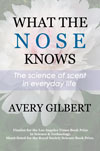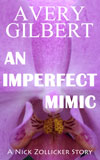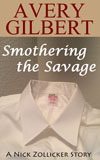
[Steampunk eyewear by Kyle Miller.]
FN reader and fledgling science blogger Cellularscale brought this one to my attention a few days ago. It’s a new paper by a Dutch research team at Utrecht University. Their topic is the Proustian Hypothesis, which holds that odors are more effective triggers of emotional memories than cues in other sense modalities. This frequently invoked notion, along with the crediting of it to the French novelist, is one that I beat to a bloody pulp in a chapter of What the Nose Knows called “Proust’s Soggy Madeleine.”
So when Cellularscale pointed me to “Proust revisited: Odours as triggers of aversive memories,” I downloaded a copy and opened it with interest. Would this group of psychologists be Proust Boosters or Proust Busters?
They begin by noting that previous studies have led to conflicting results regarding olfactory exceptionalism. They also point to a methodological problem: most studies of sensory-cued memories fail to “control for individual differences between memories in terms of content, affective value, and time past since encoding.” In the usual experimental design, you are offered a smell/picture/sound and asked to recall a memory associated with it. So a smoky scent might remind one person of good times at the smokehouse on grandpa’s farm, and another of a traumatic house fire, leading to big-time variability and statistical noise.
One way to reduce this variability is to create a uniform memory in the lab. The Utrecht team did this by having volunteers watch a 12-minute film involving traffic accidents, surgery, and people being crushed by a stampeding elephant. (When it comes to aversive stimuli, psychologists can really deliver the goods!)
The film was accompanied by a scent in the test room, along with background lighting and a soundtrack. All three sensory cues were elaborately pilot tested beforehand to insure that they were equally pleasant, intense and arousing. (The odor was IFF’s Cassifix, dissolved in isopropyl myristate).
Volunteers watched the film and rated it on emotionality, vividness, pleasantness, and arousal. A week later, they came back to the lab expecting to watch another film. Instead, they were asked to write down their memory of the earlier film, and rate the memory on the same dimensions (along with “level of detail” and “evocativeness.”). While doing this they were randomly exposed to one of the three background stimuli from the earlier session: either olfactory, auditory, or visual.
The film-memory ratings were compared across the three groups. Odor-cued memories were less pleasant, more arousing and experienced as more detailed than memories evoked by the music cues. However,
Memories evoked by a visual trigger did not differ significantly from memories evoked by an odour or by music.While odors trumped tunes, they “were not more evocative or emotive than visual triggers.”
So how best to view these results? It depends on whether or not you’re wearing Proust goggles. If you are, then you focus on the hypothesis-saving effectiveness of smell over sound. If not, you see this as more evidence that smell doesn’t live up to its reputation as a super-cue for memory.
The study discussed here is “Proust revisited: Odours as triggers of aversive memories,” by Marieke B.J. Toffolo, Monique A.M. Smeets, and Marcel A. van den Hout, published in Cognition and Emotion, 26:83-92, 2012.













